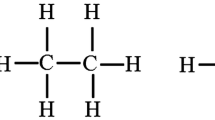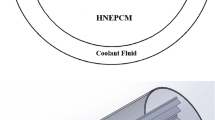Abstract
Measurement and modeling of fluid properties and phase behavior of gas condensate reservoir fluids are challenging tasks. Many researchers proposed various empirical correlations based on either simple measurable field or laboratory data (e.g., gas-to-condensate ratio (GCR), compositions, and plus fraction characteristics) to estimate other PVT (pressure–volume–temperature) properties. In this study, several empirical correlations for estimating gas condensate fluid properties have been selected to be evaluated against available field data gathered from Iranian gas condensate fields. Experimental data from 30 lean gas condensate samples taken from nine gas condensate fields in the south of Iran were collected to examine the reliability of the empirical correlations. A wide range of field data were used for the evaluation: reservoir temperatures of 343.7–385.9 K, gas molecular weights of 17.40–21.13 g/mol, dew point pressures of 21.37–35.64 MPa, gas compressibility factors of 0.84–1.06 at dew point pressure, maximum retrograde condensates of (MRC) 0.09–2.91%, and GCRs of 5964–110,012.6 m3/m3. The estimated empirical correlations were compared to the measured field data, and the accuracy of the correlations was evaluated via error analysis. The parameters included in the assessment of empirical correlations were C7+ mole%, gas molecular weight, MRC, GCR, dew point pressure, and gas compressibility factor at dew point pressure. The results indicate that correlations of parameters with dew point pressure and with MRC have minimum and maximum errors, respectively. In cases where the GCR is high, correlations with C7+ mole% were not suitable for assessment. Also, estimation of gas compressibility factors at dew point pressure based on empirical correlations is not recommended.





















Similar content being viewed by others
Notes
\({\text{deviation}}\;{\text{\% }}\; = \;\frac{{{\text{calculated value}} - {\text{measured}}\;{\text{value}}}}{{{\text{measured}}\;{\text{value}}}} *100\).
References
Ahmadi, M. A., & Ebadi, M. (2014). Evolving smart approach for determination dew point pressure through condensate gas reservoirs. Fuel,117, 1074–1084.
Ahmadi, M. A., Ebadi, M., Marghmaleki, P. S., & Fouladi, M. M. (2014a). Evolving predictive model to determine condensate-to-gas ratio in retrograded condensate gas reservoirs. Fuel,124, 241–257.
Ahmadi, M. A., Ebadi, M., & Yazdanpanah, A. (2014b). Robust intelligent tool for estimating dew point pressure in retrograded condensate gas reservoirs: Application of particle swarm optimization. Journal of Petroleum Science and Engineering,123, 7–19.
Ahmadi, M. A., & Elsharkawy, A. (2017). Robust correlation to predict dew point pressure of gas condensate reservoirs. Petroleum,3(3), 340–347.
Ahmed, T. (1989). Hydrocarbon phase behavior. Huston: Gulf Publishing Company.
Ahmed, T. (2006). Reservoir engineering handbook. Massachusetts: Elsevier/Gulf Professional.
Al-Dhamen, M., & Al-Marhoun, M. (2011). New correlations for dew-point pressure for gas condensate. In Paper presented at the SPE Saudi Arabia section young professionals technical symposium, 14–16 March, Dhahran, Saudi Arabia. https://doi.org/10.2118/155410-MS.
Al-Marhoun, M. A. (1988). PVT correlations for Middle East crude oils. Journal of Petroleum Technology,40(05), 650–666.
Al-Marhoun, M. A. (2004). Evaluation of empirically derived PVT properties for Middle East crude oils. Journal of Petroleum Science and Engineering,42(2–4), 209–221.
Al-Shawaf, A., Kelkar, M., & Sharifi, M. (2014). A new method to predict the performance of gas-condensate reservoirs. SPE Reservoir Evaluation & Engineering,17(02), 177–189.
Ameli, F., & Dabir, B. (2015). Application of a smart mesh generation technique in gas condensate reservoirs: Auto-tune PVT package for property estimation. Journal of Natural Gas Science and Engineering,24, 1–17.
Arabloo, M., Shokrollahi, A., Gharagheizi, F., & Mohammadi, A. H. (2013). Toward a predictive model for estimating dew point pressure in gas condensate systems. Fuel Processing Technology,116, 317–324.
Babalola, F., Susu, A., & Olaberinjo, F. (2009). Gas condensate reservoir modeling, Part I: From deterministics to stochastics. Petroleum Science and Technology,27(10), 1007–1013.
Bonyadi, M., & Esmaeilzadeh, F. (2007). Prediction of gas condensate properties by Esmaeilzadeh–Roshanfekr equation of state. Fluid Phase Equilibria,260(2), 326–334.
Craft, B. C., Rogers, J. B., & Terry, R. E. (1991). Applied petroleum reservoir engineering. New Jersey: Prentice Hall.
Dandekar, A. (2015). Critical evaluation of empirical gas condensate correlations. Journal of Natural Gas Science and Engineering,27, 298–305.
Danesh, A. (1998). PVT and phase behaviour of petroleum reservoir fluids. Amsterdam: Elsevier.
Dindoruk, B. (2012). Development of a correlation for the estimation of condensate to gas ratio (CGR) and other key gas properties from density data. Paper presented at the SPE annual technical conference and exhibition, 8–10 October, San Antonio, Texas, USA. https://doi.org/10.2118/160170-MS.
Elsharkawy, A. M. (2001). Characterization of the plus fraction and prediction of the dewpoint pressure for gas condensate reservoirs. Paper presented at the SPE Western regional meeting, 26–30 March, Bakersfield, California. https://doi.org/10.2118/68776-MS.
England, W. (2002). Empirical correlations to predict gas/gas condensate phase behaviour in sedimentary basins. Organic Geochemistry,33(6), 665–673.
Fasesan, S., Olukini, O., & Adewumi, O. (2003). Characteristics of gas condensate. Petroleum Science and Technology,21(1–2), 81–90.
Fattah, K. (2014). Gas–oil ratio correlation (Rs) for gas condensate using genetic programming. Journal of Petroleum Exploration and Production Technology,4(3), 291–299.
Humoud, A., & Al-Marhoun, M. (2001). A new correlation for gas-condensate dewpoint pressure prediction. Paper presented at the SPE Middle East oil show, 17–20 March, Manama, Bahrain. https://doi.org/10.2118/68230-MS.
Jalali, F., Abdy, Y., & Akbari, M. K. (2007). Using artificial neural Network’s capability for estimation of gas condensate Reservoir’s dew point pressure. Paper presented at the EUROPEC/EAGE conference and exhibition, 11–14 June, London, U.K. https://doi.org/10.2118/107032-MS.
Liu, H., Sun, C.-Y., Yan, K.-L., Ma, Q.-L., Wang, J., Chen, G., et al. (2013). Phase behavior and compressibility factor of two China gas condensate samples at pressures up to 95 MPa. Fluid Phase Equilibria,337, 363–369.
Mehrabian, A., & Crespo, F. (2011). A new multi-sample EOS model for the gas condensate phase behavior analysis. Oil & Gas Science and Technology-Revue d’IFP Energies nouvelles,66(6), 1025–1033.
Namdar, H., Khodapanah, E., & Tabatabaei-Nejad, S. A. (2019). Optimization of flue gas composition to maximize base gas replacement during UGS process. Natural Resources Research. https://doi.org/10.1007/s11053-019-09518-0.
Nasriani, H., Asadi, E., Khan, K., Graham, T., Ndlovu, S., & Mai, J. (2017). Evaluation of in situ compositions in retrograde gas condensate fields. Paper presented at the 79th EAGE conference and exhibition. https://doi.org/10.3997/2214-4609.201700625.
Nasriani, H. R., Asadi, E., Nasiri, M., Khajenoori, L., & Masihi, M. (2015). Challenges of fluid phase behavior modeling in Iranian retrograde gas condensate reservoirs. Energy Sources, Part A: Recovery, Utilization, and Environmental Effects,37(6), 663–669.
Nemeth, L., & Kennedy, H. (1967). A correlation of dewpoint pressure with fluid composition and temperature. Society of Petroleum Engineers Journal,7(02), 99–104. https://doi.org/10.2118/1477-PA.
Ovalle, A. P., Lenn, C. P., & McCain, W. D. (2007). Tools to manage gas/condensate reservoirs; novel fluid-property correlations on the basis of commonly available field data. SPE Reservoir Evaluation & Engineering,10(06), 687–694.
Paredes, J. E., Perez, R., & Larez, C. J. (2012). Correlation to predict and validate the maximum retrograde condensation in gas condensate reservoirs. Paper presented at the SPE annual technical conference and exhibition, 8–10 October, San Antonio, Texas, USA. https://doi.org/10.2118/158494-MS.
Paredes, J. E., Perez, R., Perera Perez, L., & Larez, C. J. (2014). Correlations to estimate key gas condensate properties through field measurement of gas condensate ratio. Paper presented at the SPE annual technical conference and exhibition, 27–29 October, Amsterdam, The Netherlands. https://doi.org/10.2118/170601-MS.
Qassamipour, M., & Hashemi, A. (2011). Mechanisms of liquid buildup in gas condensate reservoirs. Petroleum Science and Technology,29(23), 2425–2431.
Shokir, E. M. E. M. (2008). Dewpoint pressure model for gas condensate reservoirs based on genetic programming. Energy & Fuels,22(5), 3194–3200. https://doi.org/10.1021/ef800225b.
Starling, K. (1973). Fluid thermodynamic properties for light petroleum systems. Houston: Gulf Pub. Co.
Stueck, H., Houseknecht, D., Franke, D., Gautier, D., Bahr, A., & Ladage, S. (2016). Shale-gas assessment: Comparison of gas-in-place versus performance-based approaches. Natural Resources Research,25(3), 315–329.
Zendehboudi, S., Ahmadi, M. A., James, L., & Chatzis, I. (2012). Prediction of condensate-to-gas ratio for retrograde gas condensate reservoirs using artificial neural network with particle swarm optimization. Energy & Fuels,26(6), 3432–3447
Acknowledgment
Authors acknowledge South Zagros Oil and Gas Production Company for providing data.
Author information
Authors and Affiliations
Corresponding author
Appendix
Appendix
Nemeth and Kennedy (1967)
Nemeth and Kennedy (1967) suggested a correlation between dew point pressure of fluid (Pa) and its composition, reservoir temperature (K), and characteristics of the C7+ fraction including molecular weight and specific gravity.
Elsharkawy (2001)
Elsharkawy (2001) developed a simple, accurate, and reliable empirical model to calculate the dew point pressures (Pa) for condensate gas systems as a function of available gas analysis and reservoir temperature (K).
\(\begin{aligned} & A_{0} = 4268.85\quad A_{1} = 0.094056\quad A_{2} = - 7157.87\quad A_{3} = - 4540.58\quad A_{4} = - 4663.55\quad A_{5} = - 1357.56 \\ & A_{6} = - 7776.10\quad A_{7} = - 9967.99\quad A_{8} = - 4257.10\quad A_{9} = - 1417.1\quad A_{10} = 691.5298\quad A_{11} = 40660.36 \\ & A_{12} = 205.26\quad A_{13} = - 7260.32\quad A_{14} = - 352.413\quad A_{15} = - 114.519\quad A_{16} = 8.133\quad A_{17} = 94.916 \\ & A_{18} = 238.252 \\ \end{aligned}\)
Ovalle et al. (2007)
Ovalle et al. (2007) proposed a power function correlation to estimate composition of the C7+ mole fraction of original reservoir gas using GCR (m3/m3). This correlation has been developed based on 862 condensate gas samples with AARE (absolute average relative error) of 6.23%.
Shokir (2008)
Shokir (2008) proposed a dew point pressure (Pa) prediction model as a function of reservoir fluid composition in terms of mole fraction of C1 through C7+, N2, CO2, and H2S, MWC7+, and reservoir temperature (K).
In Eqs. A.4–A.8, Xi is the mole fraction of ith component.
Al-Dhamen and Al-Marhoun (2011)
Al-Dhamen and Al-Marhoun (2011) presented correlations to calculate the dew point pressure (Pa) as functions of reservoir temperature (K), condensate specific gravity (γcond), gas specific gravity (γg), and GCR (m3/m3). The data used for developing the models are obtained from CCE experiments from Middle East fields.
Paredes et al. (2012)
Paredes et al. (2012) proposed two correlations for estimating MRC based on gas molecular weight and GCR (m3/m3).
Paredes et al. (2012) recommended using Eq. A.16 because it presented less variability with respect to the measured data.
Dindoruk (2012)
Dindoruk (2012) developed a correlation for estimation of condensate-to-gas ratio. Here, condensate-to-gas ratio (m3/106m3) is estimated based on gas molecular weight value with a fourth-degree equation.
Paredes et al. (2014)
Paredes et al. (2014) proposed below set of correlations for estimating C7+ mole%, gas molecular weight, MRC, dew point pressure (Pa), and gas compressibility factor in dew point pressure. These correlations were obtained from the analysis of more than 100 PVT studies mainly from Mexico and other regions of Latin America.
In Eqs. A.19 and A.20, C7+mole% and gas molecular weight are computed based on GCR. In Eqs. A.19 and A.20, GCR is in m3/m3. In Eq. A.21, MRC is a function of C7+mole%. Equation A.22 gives gas compressibility factor in dew point pressure based on C7+mole% and gas molecular weight. Finally, in Eq. A.23 dew point pressure in Pa is obtained using gas compressibility factor.
This set of correlations (A.19–A.23) has been evaluated both successively and independently. For example in continuous form, calculated C7+mole% from Eq. A.19 has been used for estimating MRC in Eq. A.21. In independent form, the actual values of any quantity have been taken from PVT reports and the correlation has been evaluated.
Starling (1973)
A modification of the Benedict–Webb–Rubin EOS as proposed by Starling (1973) with 11 parameters has been developed to predict the compressibility factor of reservoir fluids (Danesh 1998).
Here, Pr and Tr are reduced pressure and temperature, respectively.
Rights and permissions
About this article
Cite this article
Keyvani, F., Amani, M.J., Kalantariasl, A. et al. Assessment of Empirical Pressure–Volume–Temperature Correlations in Gas Condensate Reservoir Fluids: Case Studies. Nat Resour Res 29, 1857–1874 (2020). https://doi.org/10.1007/s11053-019-09541-1
Received:
Accepted:
Published:
Issue Date:
DOI: https://doi.org/10.1007/s11053-019-09541-1




